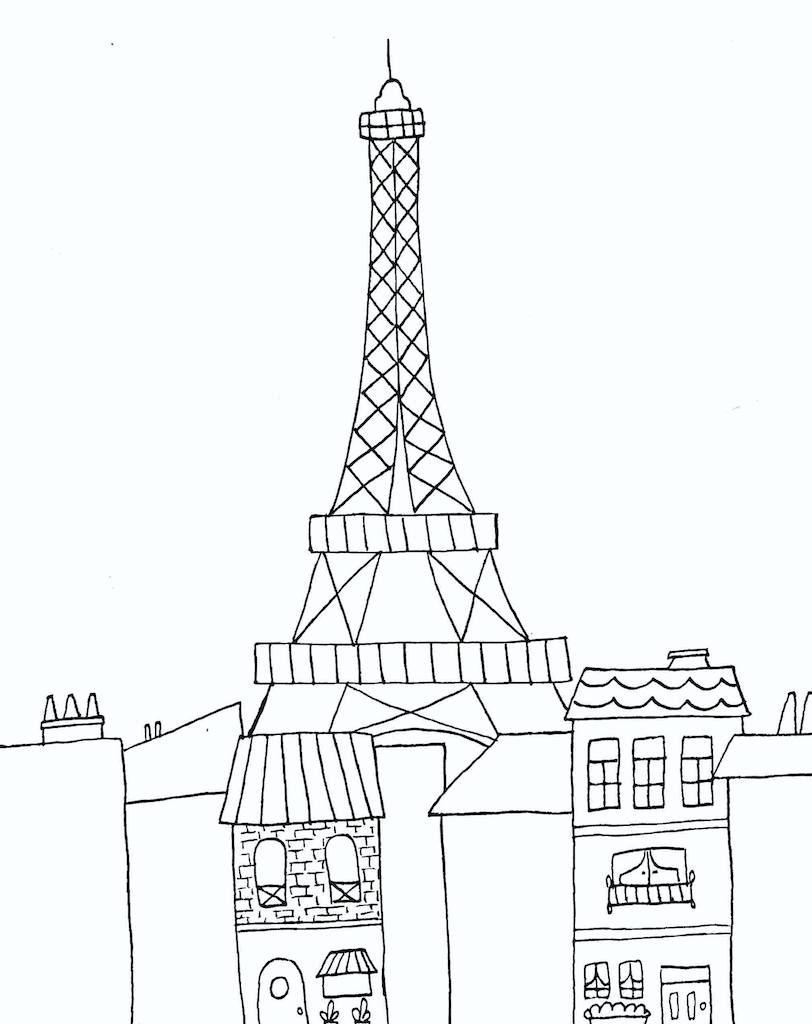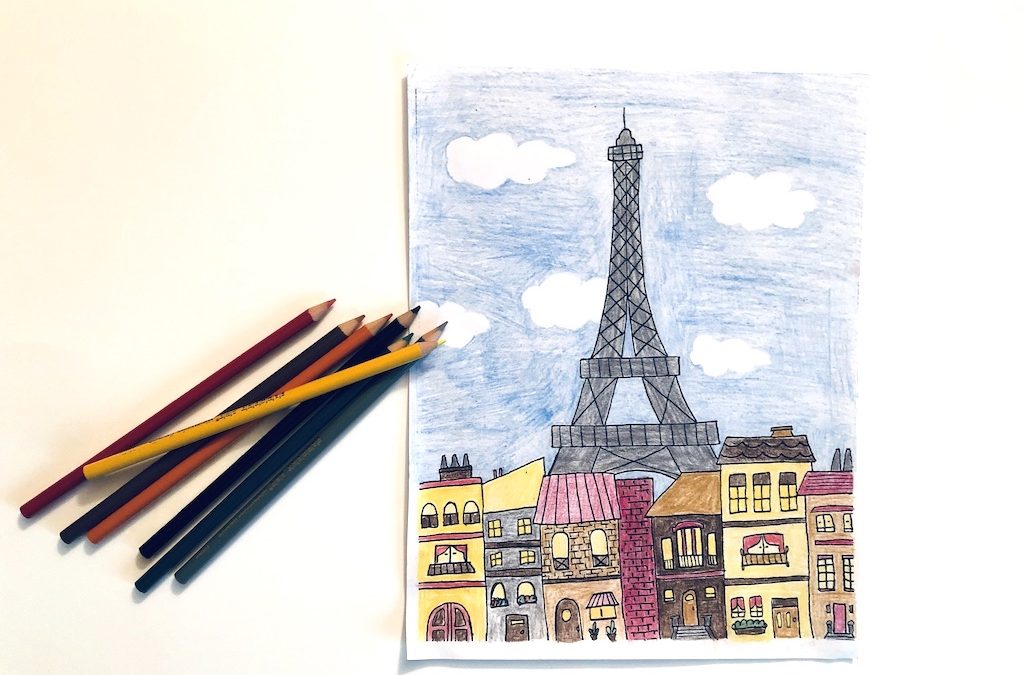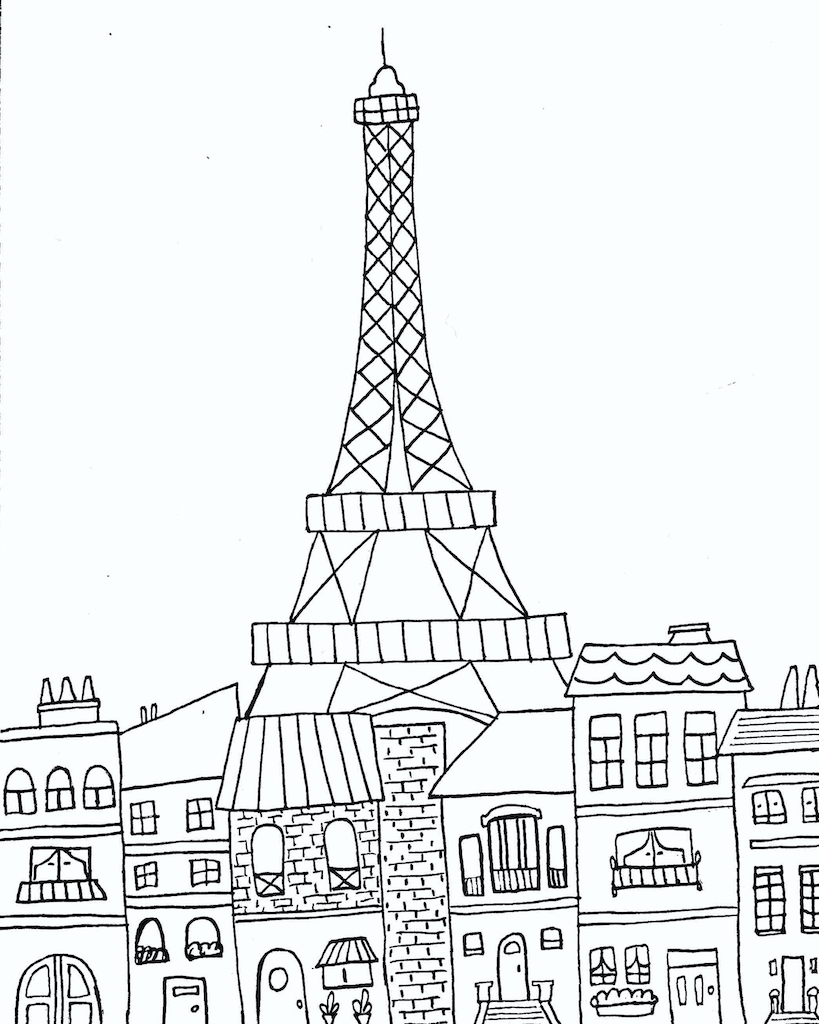Background:
The French have a nickname for the Eiffel Tower, La Dame de Fer, or “the Iron Lady.”
Although at the beginning it was seen as “the ugliest building in Paris,” today, the Eiffel Tower is arguably Paris’ most beloved and symbolic landmark. Built as the main exhibit for the World’s Fair of 1889, it was constructed to commemorate the centennial of the French Revolution and to showcase the accomplishments of the Industrial Revolution. Gustave Eiffel, a French civil engineer, is usually credited with designing the tower that bears his name even though two engineers from his company created the actual design. He used latticed wrought iron to construct the tower to demonstrate that the metal could be as strong as stone, while being lighter.
In 1887, iron was a newly popular building material because of the Industrial Revolution. However, at the time of the tower’s construction, it had only appeared internally as support structures, or in unimportant buildings, factories and bridges. Therefore, using iron as the key material for the Eiffel Tower was very controversial at the time. As a result, the Eiffel Tower was built amongst criticism, especially from the artistic community.
The tower was built out of iron, not steel. The iron that was used was put through a process called puddling. This process refined the iron and made it one of the highest quality materials available at that time. The iron plates and beams produced were pre-assembled at Eiffel’s factories and then taken to the construction site to be mounted and put together. This prefab system allowed Eiffel and his engineers to build the Eiffel Tower in record time – just over 2 years!
A few key facts about the Eiffel Tower:
- Construction of the Eiffel Tower cost about $7.8 million gold francs in 1889, or about 1.5 million dollars.
- The Eiffel Tower is approximately 1000 feet tall, making it the world’s tallest structure at the time until the Chrysler Building was built in New York in 1930.
- Although the tower was built to sway slightly with the wind, its sway is actually affected more by the sun. As the iron heats up on the sun-facing side of the tower, this causes the top to move as much as 7 inches away from the sun.
- There are 5 billion lights on the Eiffel Tower.
- Although the Eiffel Tower has 108 stories and over 1700 steps.
The following art project highlights the accomplishments of French engineers, architects, and builders. God provides for the shelter of his people by providing them with the ingenuity and resourcefulness to create structures that are both functional and beautiful.
Project:
Design and decorate your own Paris landscape that includes both the Eiffel Tower, as well as unique French architecture.
Materials:
- Paris Templates (available to download here)
- Colored Pencils
Instructions:
LEVEL ONE
- Allow students to think about the time of year and time of day they would like to create for their picture. To that end, encourage them to think about elements that would convey the season and the time. Show images of the Eiffel Tower and ask students if they can identify the season in various images and what images in the video or picture support their answer. In addition, look at images that represent different times of day. Again, ask students to identify elements that support their answer.
- Images of the Eiffel Tower that reflect seasonal and time-of-day changes can be found at the following link: https://www.pinterest.com/passportnation/live-it-a-slice-of-life-in-europe/eiffel-tower/
- Using colored pencils or crayons, instruct students to determine their choice of season and time of day for their picture of the Eiffel Tower. Encourage students to incorporate various elements such as lights, flowers, and colors that support their vision.
LEVEL TWO
- Using Paris Template 2:

- Encourage students to create their own French architecture designs on the blank buildings in the drawing (Discuss features such as: arches, windows, balconies, columns, plants/flowers, etc…).
- If time permits, students may color completed picture with colored pencils or crayons.
The following is an example of this process:
https://www.youtube.com/watch?v=Dft0WAna0jA
God indeed cares about his creation and has provided for, not just our basic need of shelter, but often, the opportunity to live in a beautiful shelter! In addition, God has given men and women around the world the gifts and opportunities to create and develop structures that fulfill various functional needs in our community, and do it in a way that adds beauty to our surroundings!


